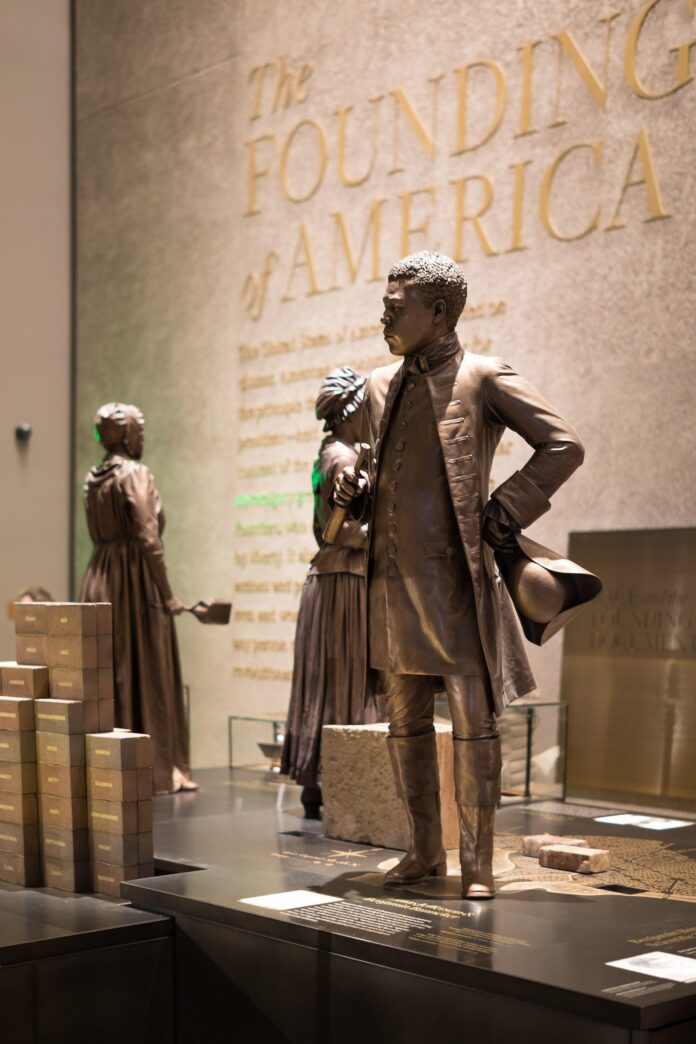In 1926, African American scholar Carter G. Woodson launched his first celebration of Negro History Week, which would eventually become Black History Month. The purpose was not to spotlight Black achievements for a number of days or weeks, but to expand the study of African American history and culture across the country and to promote it year round.
As the first historian and African American to serve as executive director of the US President’s Committee on the Arts and the Humanities (PCAH), I am especially proud of the ways that the PCAH aligns with Woodson’s mission. Bolstered by a new Executive Order that is unprecedented in its understanding of the reach and significance of the arts and humanities, its focus on equity and its inclusion of historically underserved communities, the PCAH recognises that a robust and accurate telling of marginalised histories is essential to the vitality of our nation. As part of its mandate, the PCAH will work to make histories that have been excluded more central and accessible to the nation.
Social change and cohesion
Along with other educators, Woodson created lectures, performances, curricula for schoolchildren, Black history clubs for adults and publications that operated far beyond Negro History Week. For him, recognising African Americans’ central role in US history was a cause as urgent as the anti-lynching movement. This is because he believed that a telling of history that includes the stories and contributions of marginalised people can provoke social change and foster cohesion.
The urgency that Woodson felt nearly a century ago still resonates today. As controversies over the inclusion of Black history continue to rage—whether through backlash against large-scale Black public history initiatives or Florida’s recent ban on an elective advanced placement course in African American Studies—our nation’s museums, libraries, theatres and community-based cultural spaces have a special charge. Through their collections, exhibitions, programmes and events, these institutions play a critical role in educating broad publics on Black history and normalising its full inclusion in American society. While chronically underfunded, African American museums, libraries and archives have been at the forefront of this work, creatively making Black history central to our understanding of American life every day of the year.

Tsione Wolde-Michael Courtesy of Tsione Wolde-Michael
One of Woodson’s greatest fears for Negro History Week was that its substance might be diluted with its rising popularity. Today, many institutions have become overly preoccupied with the optics of producing events for the heritage month, making the task more of a public-facing checkbox and less of a yearlong, holistic effort. While the importance of Black History Month cannot be overstated, the impulse for institutions to signal monthlong participation seems to obscure the primary function of the observance. As Woodson encouraged, Black History Month should be the annual culmination of a long-term commitment to Black history’s broader inclusion in US history. This commitment must also extend to funding Black institutions doing the work every day.
As a founding staff member of the National Museum of African American History and Culture and former director of the Center for Restorative History, my work at the Smithsonian connected me to smaller Black institutions around the country that have been doing cutting-edge work to preserve and promote Black history and democratise whose knowledge is valued. Over the years, I took away three key points for those in the early stages of embarking on this work:
1. Work in Black history requires serious preparation, resources and expertise. In that process the knowledge and perspectives of Black specialists and community-based experts should be valued.
2. Creating space for marginalised histories often means changing policies to be more inclusive. This includes re-evaluating standards for categories such as provenance or physical care that can inadvertently be exclusionary to important facets of Black history.
3. Black history is not in the past. It lives on and full engagement with its afterlives requires an exploration of its impact on the present.
Whether doing this work at a small local institution or the higher levels of government, the timing could not be more critical. In an otherwise polarising climate, this work strengthens democracy and facilitates mutual understanding. In doing so, perhaps we can honour Woodson’s legacy and move closer to realising his vision of a day when Black history becomes our shared national story.
• Tsione Wolde-Michael is an arts administrator, historian and executive director of the President’s Committee on the Arts and the Humanities. The opinions expressed in this article are those of the author and do not necessarily reflect the views of the PCAH or the US government

























